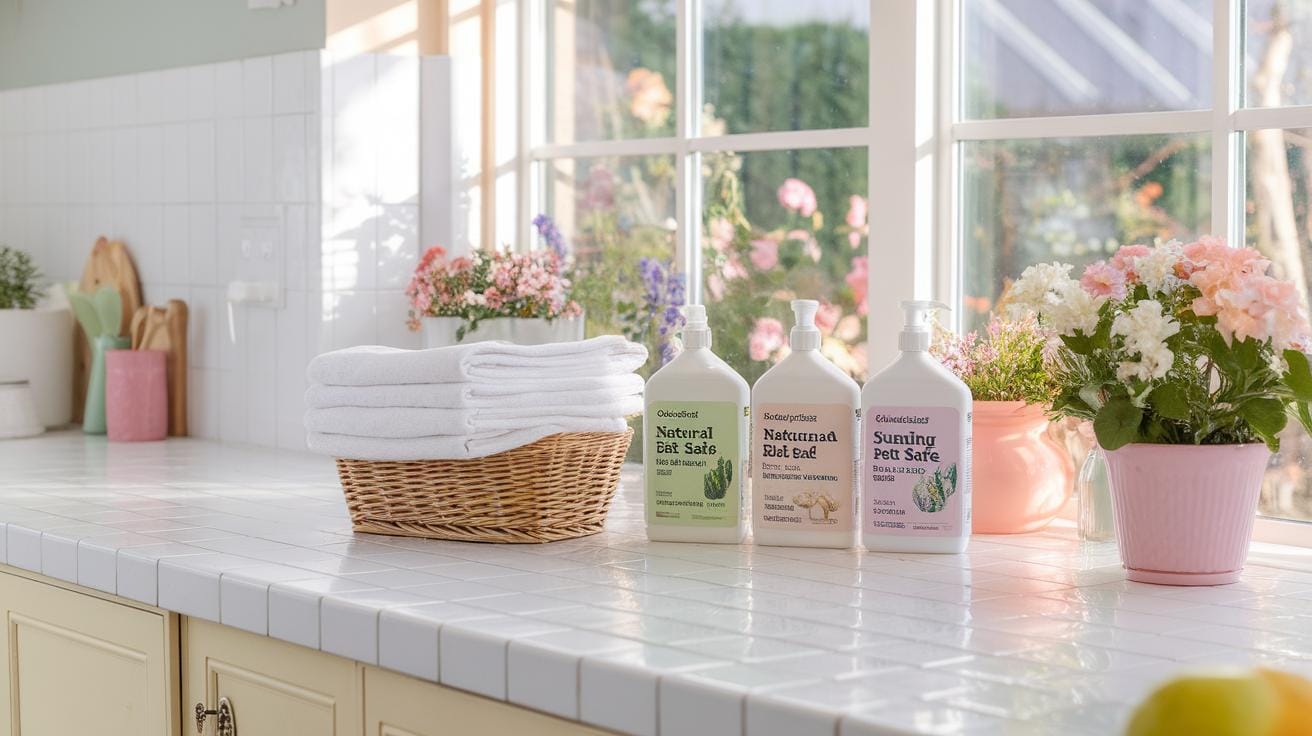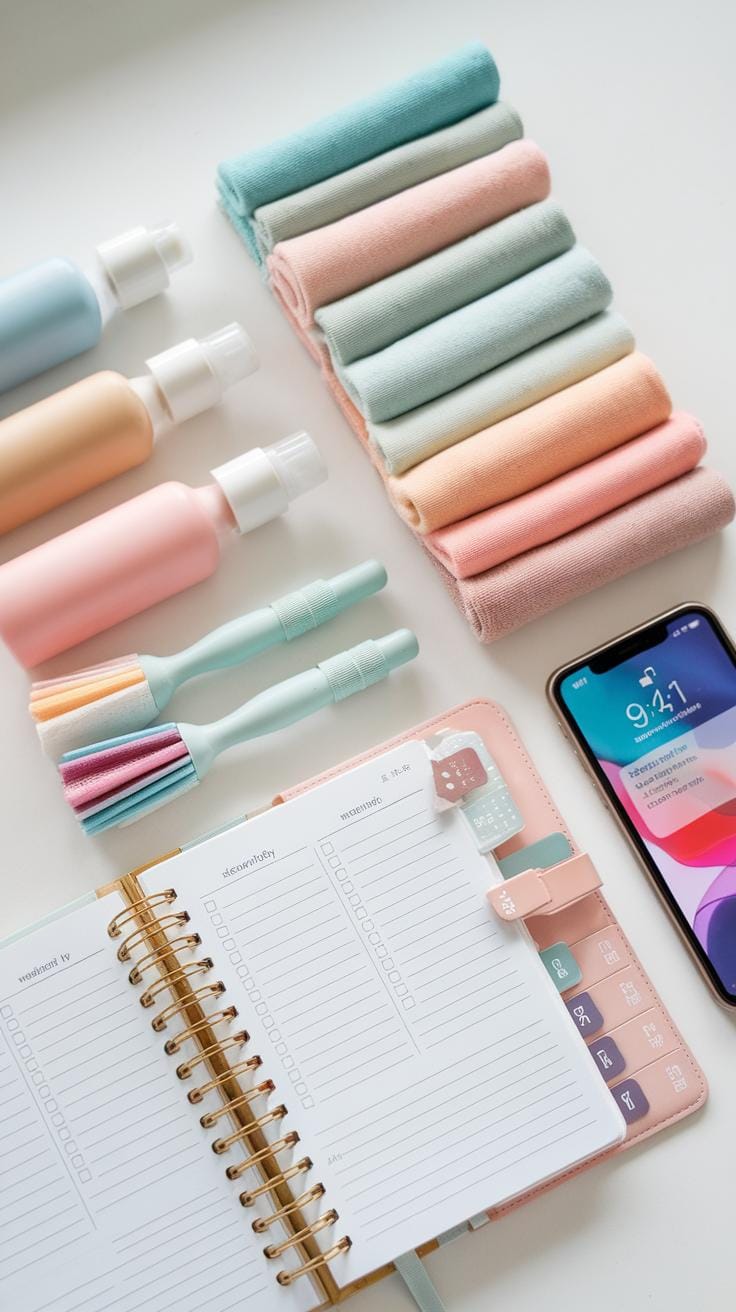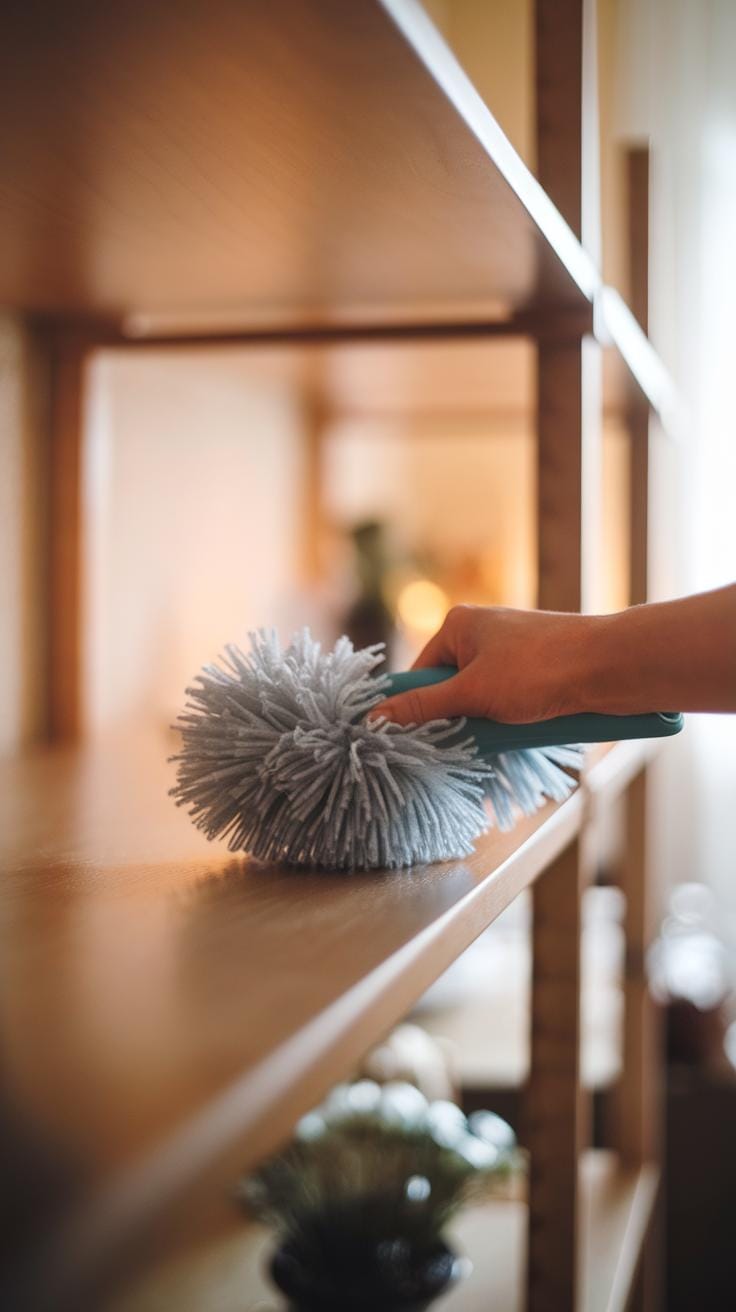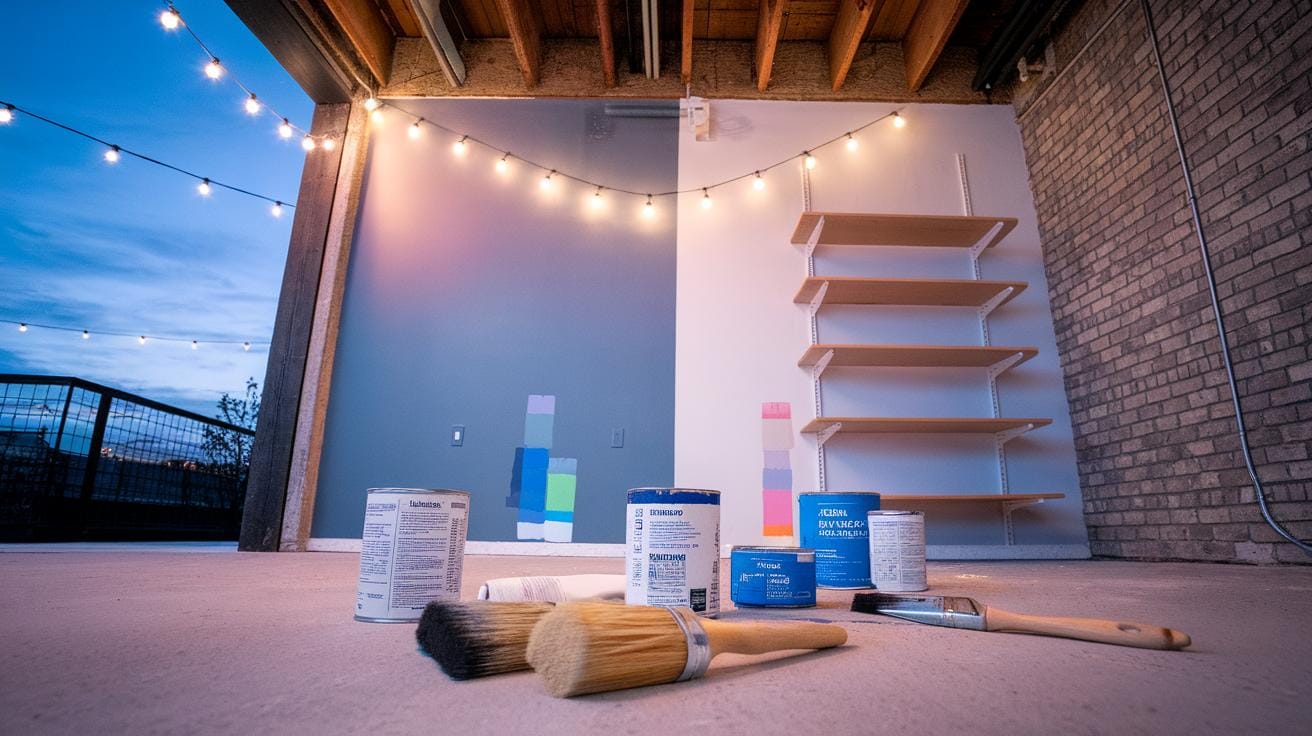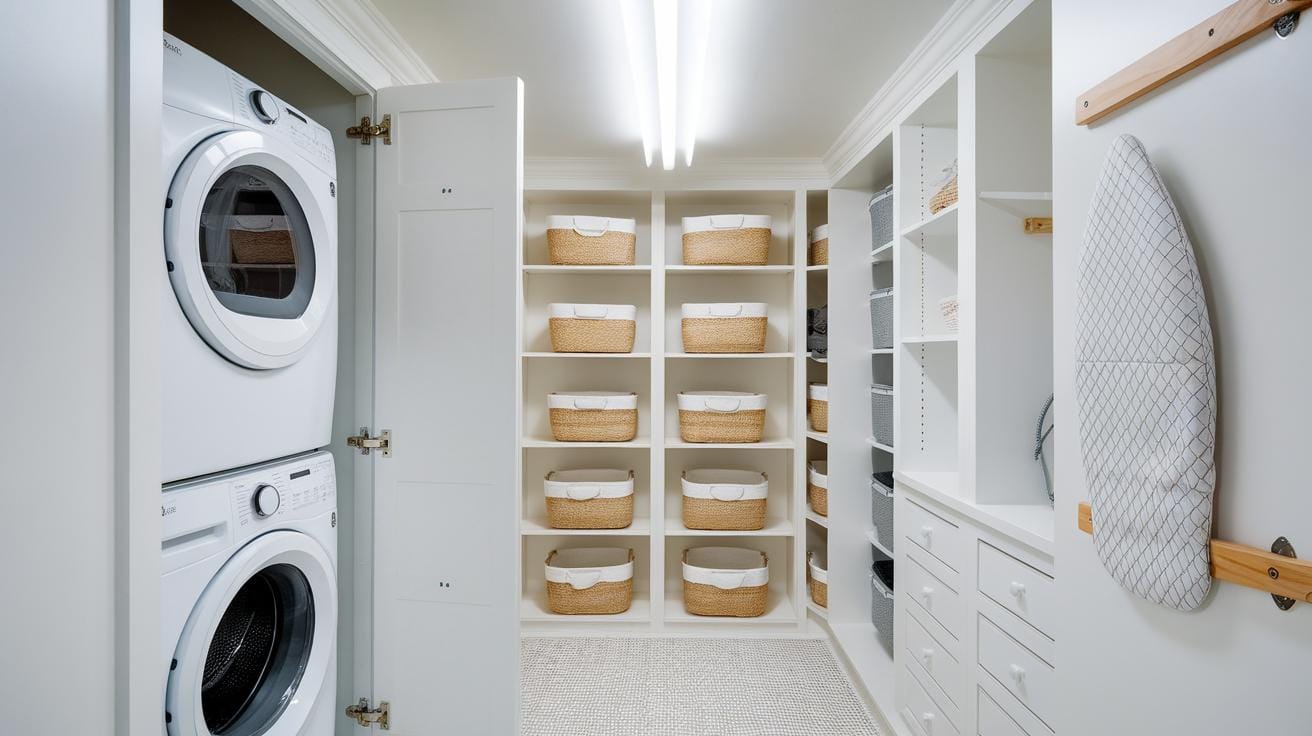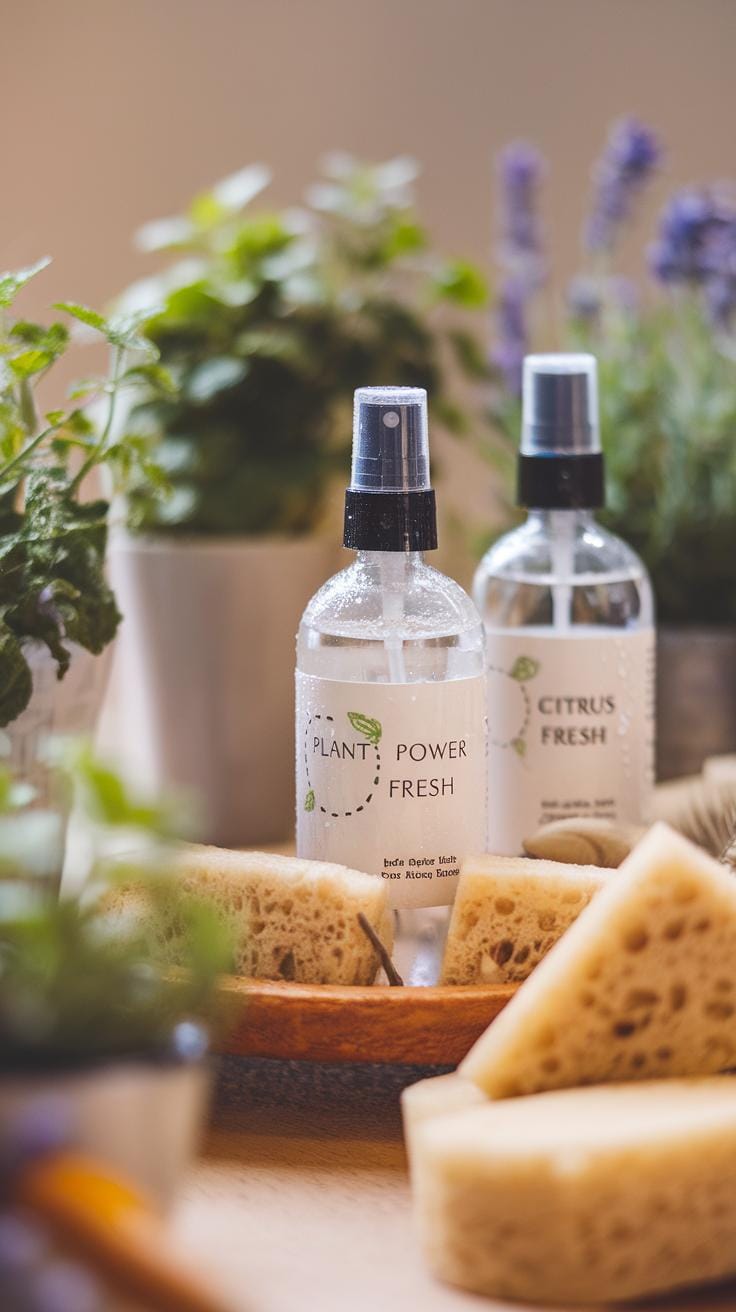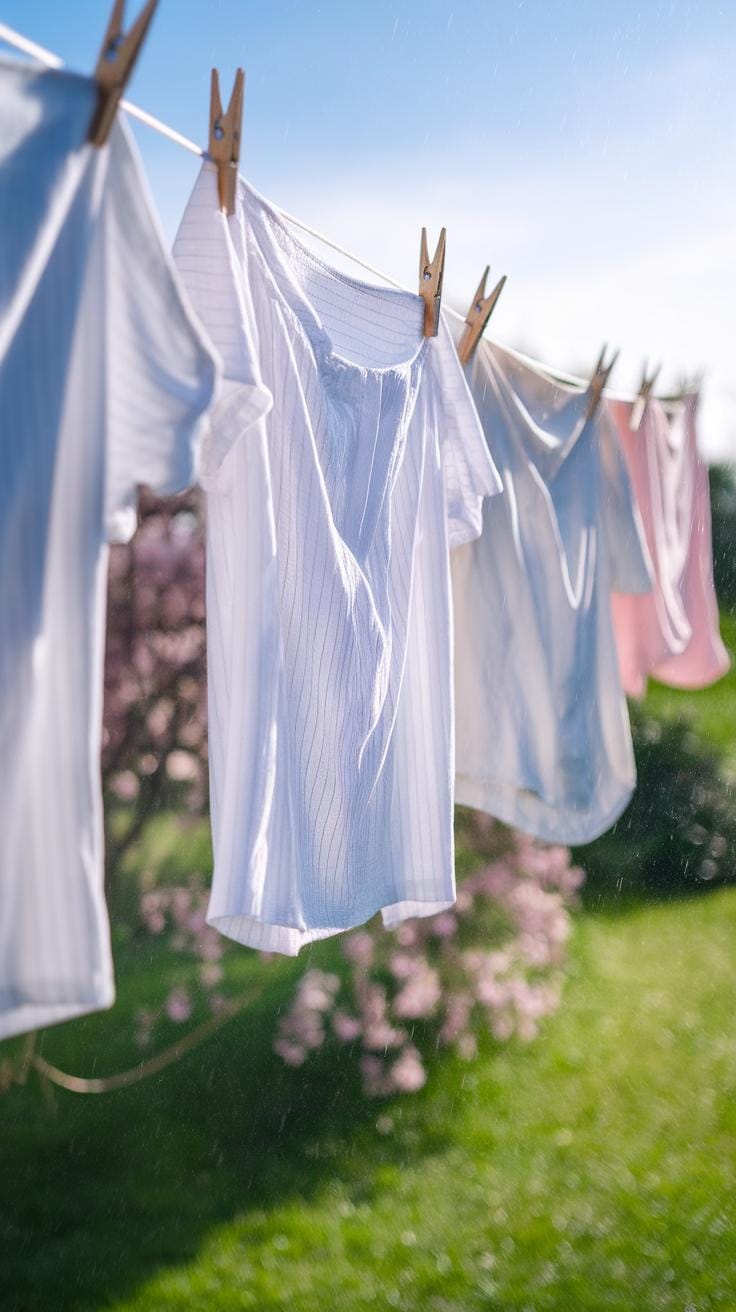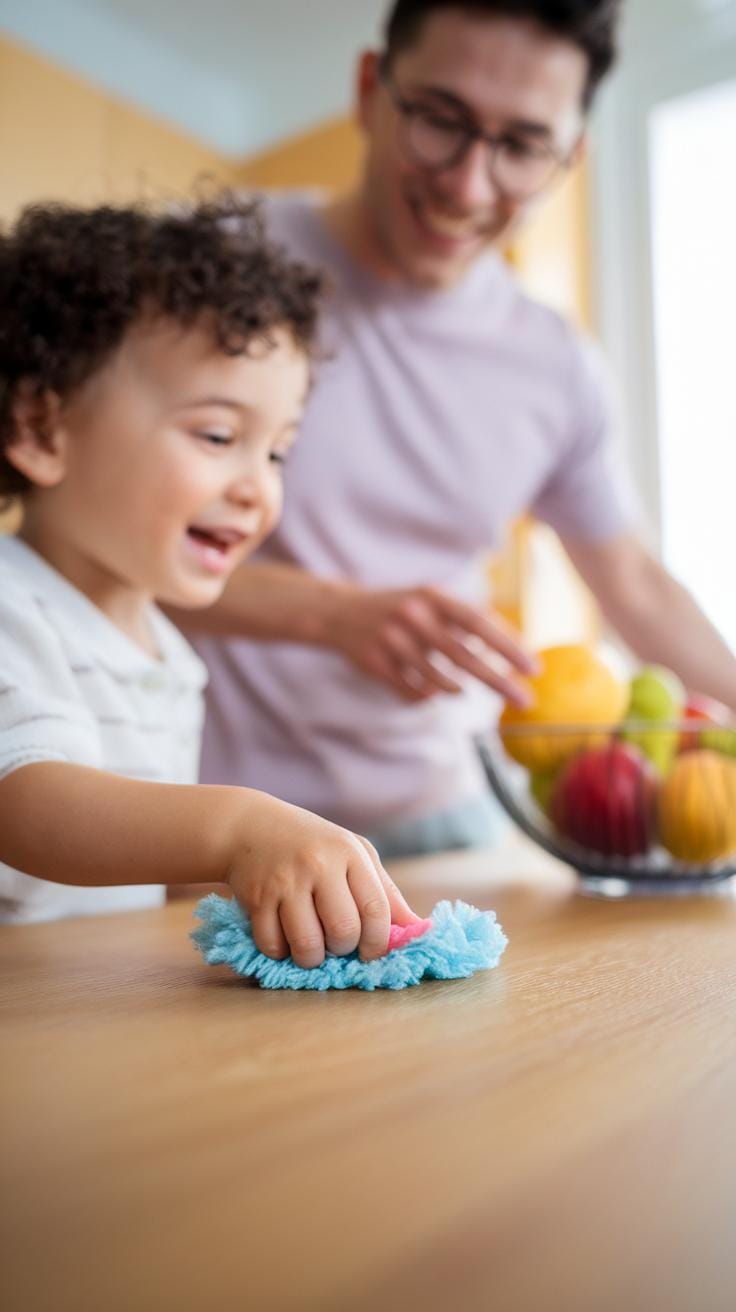Introduction
Keeping your home clean plays a vital role in creating a comfortable and healthy living space. A well-maintained home not only offers visual appeal but also reduces health risks by curbing allergies and infections. Your daily environment influences your wellbeing, so investing time in cleaning can bring lasting benefits. You might wonder how to clean efficiently without overwhelming your schedule or using complex methods.
This article offers straightforward, effective cleaning tips tailored for everyday household upkeep. It covers practical methods to manage common problems like dust, dirt, clutter, and germs. Whether you live alone or with family, these insights aim to simplify cleaning routines and encourage a fresh atmosphere. Maintaining cleanliness is achievable with simple habits and smart choices you can start today to protect your home and health.
Organizing Your Cleaning Routine
Creating a cleaning schedule that fits your lifestyle helps keep your home tidy without feeling overwhelming. Instead of doing all cleaning at once, focus on small, regular tasks. This approach prevents clutter from piling up and reduces stress.
Weekly or biweekly plans work well for most people. You might clean bathrooms on Mondays, dust living areas on Wednesdays, and vacuum bedrooms on Fridays. If your schedule is busy, split tasks into 10-15 minute sessions that suit your available time.
How do you prefer to organize your day? Make sure your plan matches your energy levels and commitments.
Consistency helps maintain a clean home and promotes healthier living spaces. Adjust your schedule as needed to keep it manageable and effective. Avoid letting chores build up, as this makes cleaning harder and less enjoyable.
Setting Realistic Cleaning Goals
Breaking cleaning into daily, weekly, and monthly tasks keeps your home cared for without wearing you out. Daily chores might include making beds, wiping kitchen counters, or washing dishes.
Weekly tasks can focus on deeper work, like mopping floors or cleaning toilets. Monthly jobs cover bigger efforts, such as washing windows or dusting vents.
By dividing tasks this way, you keep up with every area of your home and prevent last-minute, exhausting cleanups. What small steps could you add to your daily routine right now?
Setting goals this way builds a habit. It also creates a cleaner environment steadily, avoiding chaos and fatigue.
Using Checklists to Stay on Track
Simple checklists help you organize cleaning efficiently. Writing tasks down makes each job clear and less intimidating. You can create checklists for each room or cleaning session.
Checking off items gives a sense of progress and motivation. For example, list tasks like “wipe kitchen sink” or “vacuum living room.” Focusing on one task at a time keeps cleaning manageable.
Would tracking progress encourage you to stay consistent? Many find satisfaction in ticking boxes each day or week.
Use your checklist to spot areas that need more attention and to balance your efforts across the home. Keeping track turns cleaning into a routine, not a chore.
Effective Dust and Dirt Removal
Removing dust and dirt regularly keeps your home healthy and fresh. Start with dusting surfaces like shelves, tables, and window sills using a damp microfiber cloth. Microfiber traps dust instead of spreading it around, unlike feather dusters.
Sweeping floors daily helps avoid dirt buildup. Use a broom with soft, synthetic bristles for hard floors. For carpets and rugs, vacuum at least twice a week. Choose a vacuum cleaner with strong suction and a HEPA filter to capture tiny particles that affect air quality.
Focus on corners, baseboards, and under furniture where dust gathers easily. Change vacuum bags or empty canisters often to maintain performance. Dust particles can worsen allergies and asthma, so thorough cleaning makes a real difference.
Have you ever noticed dust settling quickly after cleaning? Consistent removal stops buildup before it becomes harder to clean. Small daily actions will save time and effort over weeks.
Choosing the Right Cleaning Tools
Picking tools that suit your home makes dust and dirt removal easier. Microfiber cloths work best for dusting because they hold dust tightly without chemicals. Their soft texture won’t scratch surfaces.
Vacuum cleaners with adjustable settings let you clean different floor types effectively. Some models include attachments for tight spaces like vents and upholstery. This flexibility helps you access hard-to-reach spots.
Brooms with angled heads help sweep under furniture and along edges. Avoid cheap dusters that spread dust into the air. Instead, use electrostatic dusters or microfiber mitts to trap particles.
Think about your comfort while choosing tools. Lightweight vacuums ease extended cleaning. Tools that match your home’s floor surfaces reduce extra work.
Preventing Dust Accumulation
Stopping dust before it settles makes cleaning simpler. Keep windows closed on windy days to reduce outdoor dust entering. Using air purifiers with HEPA filters can trap airborne particles indoors, improving air quality.
Limit clutter on surfaces where dust gathers quickly. Fewer items mean fewer places for dust to settle. Store unused objects in closed containers or drawers.
Regularly clean or replace HVAC filters to control dust circulation. Changing bed linens weekly and vacuuming upholstery helps reduce dust caused by skin flakes and pet hair.
Ask yourself how airflow patterns affect dust buildup. Adjust fans or vents to avoid blowing dust onto clean areas.
Maintaining Clean Surfaces and Appliances
Daily Wipes for Kitchen and Bathroom
You can keep your kitchen and bathroom surfaces hygienic by wiping them daily. Focus on areas where spills and fingerprints appear often. Use safe cleaners that kill germs without harsh chemicals. For example, a spray with diluted vinegar and water works well on countertops and sinks. Wiping these spots takes just a few minutes but stops dirt from turning into stubborn stains. How often do you clean your faucet handles or light switches? These are high-touch spots that need quick attention. Using a clean microfiber cloth helps lift dirt instead of spreading it. Creating this daily habit reduces bacteria buildup and protects your family’s health.
Regular Appliance Care
Appliances like refrigerators, microwaves, and washing machines need more than surface cleaning to last longer and work well. Empty your fridge monthly to toss expired food and wipe down shelves with warm soapy water. This prevents odors and mold growth. Microwaves benefit from steam cleaning; heat a bowl of water with lemon slices inside for five minutes, then wipe the interior. Washing machines require running an empty cycle with vinegar or a cleaner to clear detergent residue and remove smells. When was the last time you checked your appliances for buildup? Regular maintenance keeps them efficient and stops small problems from becoming costly repairs.
Tackling Clutter and Organizing Spaces
Decluttering Strategies
Start by sorting items into three groups: keep, donate, and discard. Ask yourself if you’ve used or needed the item in the past six months. If not, consider letting it go. Avoid holding onto things “just in case.”
Create designated storage areas for the items you keep. Use clear bins, labeled boxes, or drawers to group similar objects. For example, keep all craft supplies in one container or assign a basket for mail and important papers. This makes it easier to find what you need and return things to their place.
Set small goals, like tackling one drawer or shelf at a time, to avoid feeling overwhelmed. Once you clear out unused items, your space will feel open and easier to clean.
Maintaining Order Daily
Put items back immediately after use. When you finish reading a book, place it on the shelf. Hang up your coat instead of draping it over a chair. These small actions prevent clutter from piling up.
Spend five minutes each day tidying one area. Clear kitchen counters or straighten living room cushions before bed. This habit keeps your space ready for deeper cleaning sessions.
Ask yourself, “Where does this belong?” before putting something down. This question makes you think twice about leaving things out. Over time, these daily habits reduce mess and help you enjoy a calm home environment.
Preventing Mold and Moisture Problems
Moisture often hides where you least expect it, especially in bathrooms and basements. You can prevent mold by spotting damp spots early. Check around sinks, tubs, and basement walls for water stains or peeling paint. If you notice a musty smell, don’t ignore it—it signals mold growth.
Fix leaks quickly and keep surfaces dry. Use a squeegee on shower walls after use to reduce water buildup. In basements, seal cracks where water could enter. Think about how much time you spend in these areas. Have you noticed any patches that stay damp longer than others?
Managing moisture stops mold before it starts. This simple step protects your home and health, creating a clean place where your family can breathe easy.
Effective Ventilation Techniques
Good airflow matters most in rooms where moisture gathers. Bathrooms and basements often trap humidity, inviting mold. Installing exhaust fans in bathrooms can help pull out damp air. Make sure fans vent outside, not just into the attic or other rooms.
If your basement is above ground, open windows regularly to let fresh air circulate. When windows don’t open, use a dehumidifier to reduce moisture in the air. Have you tried leaving doors open between rooms to improve air movement?
Even ceiling fans or portable fans push air around and prevent stagnant spots. Increasing airflow keeps surfaces drier and mold from settling in.
Regular Inspection and Cleaning
Look closely at problem areas once a week. Small black or green spots around tile grout or wall corners can signal early mold. Is paint bubbling or cracking? That might be moisture underneath. Catching signs early prevents bigger issues.
Wear gloves and a mask when cleaning moldy spots. Use a mixture of water and vinegar or a mild detergent. Avoid mixing bleach with ammonia or other cleaners. Dry cleaned surfaces immediately with a cloth.
If mold returns, check humidity levels in your home. Keeping your living spaces dry and clean reduces the chance of mold coming back. Your home stays healthier when you deal with moisture at the first sign.
Safe and Ecofriendly Cleaning Products
Choosing cleaning products that protect your family’s health and the environment makes a big difference in your home’s safety. Harsh chemicals can irritate skin, trigger allergies, or harm pets. Opting for safer products helps you avoid these risks while keeping your house clean.
Natural ingredients like vinegar, lemon, and baking soda offer powerful cleaning without harmful toxins. These alternatives break down dirt, neutralize odors, and cut grease effectively. They biodegrade quickly and don’t contaminate water sources like many commercial cleaners do.
When shopping, aim for products labeled non-toxic, biodegradable, and free from phosphates or chlorine. These options reduce environmental damage and lower indoor pollution. What impact could smaller changes in your cleaning routine have on your home’s air quality and the planet?
Homemade Cleaning Solutions
Making your own cleaners saves money and limits chemical exposure. Start with vinegar mixed with water for glass and surface cleaning. It removes smudges and cuts through grime without streaks.
Baking soda works well as a gentle scrub for sinks, tubs, and countertops. Sprinkle some on stains or greasy spots, then scrub with a damp cloth. For tougher odors, combine baking soda with lemon juice to freshen drains.
Lemon juice itself defats and brightens surfaces. Rubbing half a lemon on cutting boards or stains lifts dirt while leaving a fresh scent. Mixing these common ingredients gives you effective results with no harsh residues.
Which homemade cleaner will you try first in your routine?
Choosing Commercial Cleaners Wisely
Not all store-bought cleaners are harmful. Reading labels carefully helps you pick safer options. Look for products with fewer ingredients listed and avoid those containing ammonia, phthalates, or synthetic fragrances.
Eco-certified symbols like EPA Safer Choice or Green Seal can guide you toward environmentally friendlier products. These certifications require lower toxicity and greater biodegradability. Avoid cleaners with “antibacterial” or “disinfectant” claims unless needed for specific germs; these often include harsher chemicals.
Consider concentrates because they reduce packaging waste. Also, sample small sizes before committing to large bottles to see how effective a product truly is for your tasks.
How often do you check product labels before buying? Taking a moment can protect your family and reduce pollution around your home.
Cleaning Floors and Carpets Efficiently
Your choice of cleaning method depends on the type of flooring you have. Hardwood floors need gentle care to avoid scratches and water damage. Use a damp mop with a mild cleaner designed for wood. Focus on cleaning once a week, but sweep or vacuum daily to keep dirt from grinding into the surface.
Tile floors handle moisture well and tolerate stronger cleaners. Mop tiles regularly to remove grime, paying extra attention to grout lines where dirt gathers. Sweep or vacuum first to pick up loose particles and prevent scratching.
Carpets trap dust, dirt, and allergens, so they require more frequent cleaning. Vacuum high-traffic areas at least twice a week. Consider deep cleaning carpets every six months to remove embedded dirt and maintain their look.
Have you checked your flooring type’s cleaning needs lately? Tailoring your approach can save time and protect your investment in the long run.
Vacuuming and Sweeping Techniques
Start by removing large debris with a broom or dry mop before vacuuming. This stops chunks from scratching your floors or clogging your vacuum. Use a vacuum cleaner with adjustable settings for different floors.
For hardwood, keep the vacuum on the bare floor mode or use a brush attachment to avoid damage. Sweep in one direction to catch all dirt. On carpets, vacuum slowly and crosswise to lift dirt from all angles. Empty the vacuum bag or canister regularly to maintain suction.
Try to make vacuuming a quick daily habit in busy areas. Are you using the right attachments and techniques to protect your floors while cleaning efficiently?
Stain Removal and Carpet Care
Address spills as soon as they happen. Blot stains with a clean cloth and avoid rubbing, which pushes dirt deeper. For common stains like coffee or wine, mix equal parts white vinegar and water and gently dab the area.
Test stain removers on hidden spots before applying them widely. For tough stains, a baking soda paste can help lift dirt when applied and then vacuumed after drying.
Schedule professional deep cleaning or rent a carpet cleaner every few months. Deep cleaning removes allergens and refreshes carpet fibers. How often do you inspect your carpets for hidden wear or stains?
Laundry Tips for Fresh and Clean Clothes
Handling laundry correctly keeps your clothes fresh and helps them last longer. Start by sorting garments not just by color but also by fabric type and how dirty they are. Mixing heavy dirt with light stains can reduce cleaning effectiveness. For example, washing heavily soiled work clothes with delicate items might lead to dirt transfer or uneven cleaning.
Choose washing temperatures based on fabric care labels. Hot water suits whites and towels but can shrink or fade delicate fabrics like wool or silk. Use detergents designed for your specific fabric; a gentle detergent protects delicate fibers, while a stronger formula works better on tougher stains.
Dry clothes properly to avoid wrinkles and shrinkage. Line drying brightens colors and extends fabric life, while machine drying suits sturdy items but can wear out fibers faster. Storing clean, dry clothes in breathable spaces prevents musty smells and fabric damage. How do you customize your laundry routine to protect your favorite garments?
Sorting Laundry Effectively
Sorting laundry into piles follows more than just separating whites and colors. Sort by fabric type to avoid damage; for example, wash heavy denim separately from lightweight shirts. Group items by how dirty they are to improve washing results—heavily stained clothes may need pre-treating or a longer wash cycle.
Consider sorting clothes that attract lint or shed fibers. Wash towels separately from clothing to prevent lint transfer. Sorting also helps protect delicate fabrics from rougher items.
Do you notice visible wear or faded colors when you mix laundry? Sorting before washing reduces these issues and keeps fabrics looking better for longer.
Avoiding Fabric Damage
Washing clothes at the right temperature preserves fabric strength and color. Use cold water for delicate fabrics and bright colors to prevent fading. Warm water suits everyday cottons, while hot water removes germs from towels and bedding.
Choose detergents suited to fabric needs. A mild detergent with fewer chemicals protects sensitive fibers. Enzyme-based detergents break down stains on durable fabrics effectively but might harm delicate materials.
Separate clothes that might bleed color, and turn garments inside out to protect colors and prints. Avoid overloading your washer, which can lead to friction and wear.
Have you checked your garment labels recently? Following care instructions helps avoid unnecessary fabric damage and keeps your clothes looking fresh longer.
Involving Family Members in Cleaning
Sharing cleaning duties among everyone living in your home can cut down your workload significantly. When each person takes responsibility, the house stays cleaner without one person feeling overwhelmed. Family members working together make chores feel quicker and even less like work. Think about how you feel when you clean alone versus when your partner or kids join in. The difference is clear. A team effort creates a more pleasant atmosphere because everyone contributes to the upkeep. This cooperation can also teach valuable lessons about respect and responsibility. Can you imagine how much smoother your weekly routine could run if everyone had a part? Encouraging shared cleaning helps keep your home neat and builds stronger family connections at the same time.
Assigning Age-appropriate Tasks
Choosing the right chores for each family member depends on their age and abilities. Younger children can handle simple jobs, like putting toys away or wiping tables. Older kids might vacuum or help with dishes. Adults should take on more demanding tasks like deep cleaning bathrooms or yard work. Consider each person’s schedule too. Assign chores that fit easily into daily routines, so no one feels overloaded. For example, a teen who spends more time after school could take on weekly vacuuming, while a working adult manages quick daily tasks. Matching tasks to skills makes the process fair and manageable. What tasks suit your family members best right now? Adjust as needed to keep everyone comfortable and involved.
Encouraging Consistent Participation
Keeping family members engaged in cleaning means creating a routine that feels rewarding and fair. Remind everyone why their role matters for the whole household. Make chores part of your daily or weekly rhythm rather than exceptions. You can use simple incentives, like praise or small rewards, to motivate participation. Clear communication helps too. Check in often and ask for feedback about the chores. Sometimes, switching tasks can prevent boredom. Showing appreciation when someone does their part encourages repeat effort. How do you currently keep motivation high in your family cleaning routine? Find ways to turn cleaning from a chore into a shared habit that feels natural to all.
Conclusions
Your home’s cleanliness profoundly affects your comfort and health. By organizing your routine into manageable tasks, you can maintain a tidy and safe environment without stress. Addressing common concerns such as dust, germs, moisture, and clutter consistently prevents bigger problems and ensures a fresh space daily. Employing the right tools and products makes cleaning more effective and protects your household members and the planet.
Sharing responsibilities among all who live with you enhances cooperation and eases the burden. Adopting these simple habits today secures a healthier home tomorrow. Which cleaning habit will you start with to improve your living space? Taking control step by step keeps your home inviting and well cared for.

